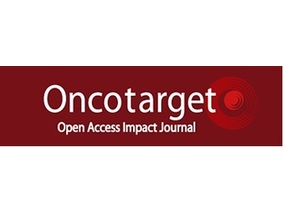 “Bone metabolism is strictly regulated, and impaired regulation caused by hormonal imbalances induces systemic bone loss. Local bone loss caused by tumor invasion into bone is suggested to be induced by the generation of cytokines, which affect bone metabolism, by tumor cells.
“Bone metabolism is strictly regulated, and impaired regulation caused by hormonal imbalances induces systemic bone loss. Local bone loss caused by tumor invasion into bone is suggested to be induced by the generation of cytokines, which affect bone metabolism, by tumor cells.
The major cause of systemic and local bone losses is excess bone resorption by osteoclasts, which differentiate from macrophages by receptor activator of nuclear factor kappa-B ligand (RANKL) or tumor necrosis factor-alpha (TNF-α).
We previously found a novel pathway for tumor-induced osteoclastogenesis targeting osteoclast precursor cells (OPCs). Tumor-induced osteoclastogenesis was resistant to RANKL and TNF-α inhibitors. In the present study, we confirmed that exosomes derived from oral squamous cell carcinoma (OSCC) cells induced osteoclasts from OPCs.
We also showed that the depletion of exosomes from culture supernatants of OSCC cells partially interfered with osteoclastogenesis, and cannabidiol, an innoxious cannabinoid without psychotropic effects, almost completely suppressed tumor-induced osteoclastogenesis.
Osteoclastogenesis and its interference by cannabidiol were independent of the expression of nuclear factor of T cell c1 (NFATc1). These results show that osteoclastogenesis induced by OSCC cells targeting OPCs is a novel osteoclastogenic pathway independent of NFATc1 expression that is partially caused by tumor-derived exosomes and suppressed by cannabidiol.”

 “Bone cancer pain (BCP) is a severe complication of advanced bone cancer.
“Bone cancer pain (BCP) is a severe complication of advanced bone cancer. “Treating Cancer-induced bone pain (CIBP) continues to be a major clinical challenge and underlying mechanisms of CIBP remain unclear.
“Treating Cancer-induced bone pain (CIBP) continues to be a major clinical challenge and underlying mechanisms of CIBP remain unclear.


 “Currently, the involvement of the endocannabinoid system in cancer development and possible options for a cancer-regressive effect of
“Currently, the involvement of the endocannabinoid system in cancer development and possible options for a cancer-regressive effect of 

 “Bone is a complex tissue of the with unique properties such as high strength and regeneration capabilities while carrying out multiple functions. Bone regeneration occurs both in physiological situations (bone turnover) and pathological situations (e.g. fractures), being performed by osteoblasts and osteoclasts. If this process is inadequate, fracture nonunion or aseptic loosening of implants occurs and requires a complex treatment.
“Bone is a complex tissue of the with unique properties such as high strength and regeneration capabilities while carrying out multiple functions. Bone regeneration occurs both in physiological situations (bone turnover) and pathological situations (e.g. fractures), being performed by osteoblasts and osteoclasts. If this process is inadequate, fracture nonunion or aseptic loosening of implants occurs and requires a complex treatment.